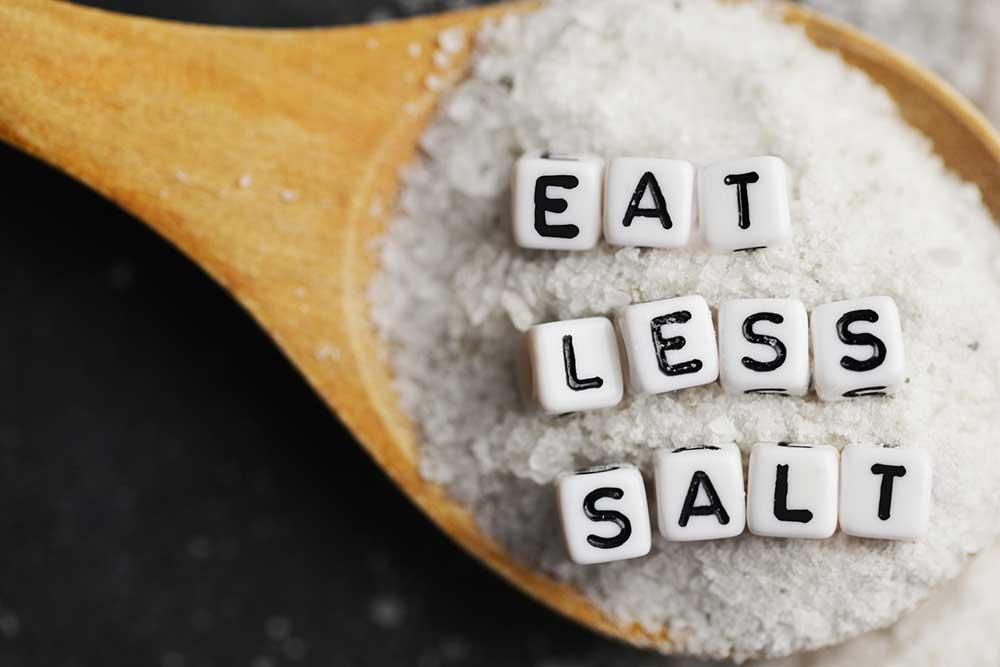UAMS, Springdale School District Partnership Sustains Five-Year Reduction in Sodium Intake for Students
| FAYETTEVILLE — The Springdale School District sustained a reduction in sodium levels in student lunches for the last five years as part of a collaboration with the University of Arkansas Medical Sciences (UAMS) Office of Community Health & Research.
As part of the Centers for Disease Control and Prevention’s (CDC) Sodium Reduction in Communities Program, UAMS researchers evaluated the changes in sodium levels in the Springdale Public Schools system over a five-year period and found that school officials were able to maintain sodium reductions in school lunches served to students, even during the height of the COVID-19 pandemic.
According to a Community Health & Research-led study, published recently in the CDC’s “Preventing Chronic Disease Journal,” the amount of sodium offered per entrée in Springdale Schools was 12% less last year than it was five years earlier.
“The impact of this program is a major breakthrough in improving the health and eating habits of future generations,” said Christopher Long, Ph.D., an assistant professor in the Office of Community Health & Research. “The Springdale School District deserves the recognition and respect for implementing the principals of the program and maintaining them for five years, paving the way for other school districts to follow.”
According to the CDC, most Americans consume more than 3,400 milligrams of sodium — more commonly known as salt — each day, far more than the daily recommendation of 2,300 milligrams. Too much sodium intake can lead to increased blood pressure, increased risk of heart attack, stroke and other cardiovascular conditions.
As part of the program, UAMS staff worked with the district to implement new strategies to reduce sodium intake among students, such as modifying recipes to offer healthier, cost-effective alternatives to students without sacrificing quality or taste.
“The partnership between Springdale Schools and UAMS has been positive and productive,” said Gena Smith, child nutrition director at the Springdale School District. “Current sodium level requirements have been met with additional staff training and assistance with menu modifications. The team at UAMS has been sensitive to the challenges that school nutrition professionals face each day. We are very appreciative of their joint efforts to provide nutritious meals to students.”
The Springdale School District is home to more than 20,000 students and 30 individual schools.
The study was supported by the UAMS Translational Research Institute, which is funded by the National Center for Advancing Translational Sciences at the National Institutes of Health, Clinical and Translational Science Award UL1 TR003107.
UAMS is the state’s only health sciences university, with colleges of Medicine, Nursing, Pharmacy, Health Professions and Public Health; a graduate school; a hospital; a main campus in Little Rock; a Northwest Arkansas regional campus in Fayetteville; a statewide network of regional campuses; and seven institutes: the Winthrop P. Rockefeller Cancer Institute, Jackson T. Stephens Spine & Neurosciences Institute, Harvey & Bernice Jones Eye Institute, Psychiatric Research Institute, Donald W. Reynolds Institute on Aging, Translational Research Institute and Institute for Digital Health & Innovation. UAMS includes UAMS Health, a statewide health system that encompasses all of UAMS’ clinical enterprise. UAMS is the only adult Level 1 trauma center in the state. UAMS has 3,047 students, 873 medical residents and fellows, and six dental residents. It is the state’s largest public employer with more than 11,000 employees, including 1,200 physicians who provide care to patients at UAMS, its regional campuses, Arkansas Children’s, the VA Medical Center and Baptist Health. Visit www.uams.edu or www.uamshealth.com. Find us on Facebook, Twitter, YouTube or Instagram.
The UAMS Northwest Regional Campus includes 288 medical, pharmacy, nursing and health professions students, 64 medical and pharmacy residents, two sports medicine fellows, and 1,000 community-based faculty. The campus has nine clinics including a student-led clinic and physical, occupational and speech therapy. Faculty conduct research to reduce health disparities. Visit www.uams.edu or www.uamshealth.com. Find us on Facebook, Twitter, YouTube or Instagram.
